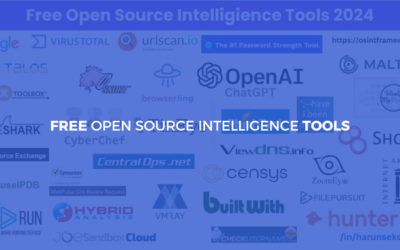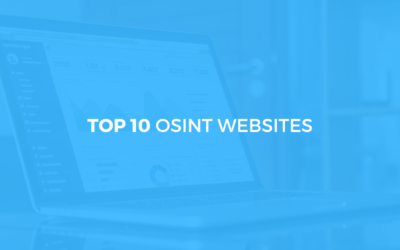What is OSINT? (Open Source Intelligence) – A Comprehensive Guide
Open Source Intelligence (OSINT) is changing the way individuals and organizations collect and analyze information. It relies on publicly available data from various online sources, such as social media, news platforms, government reports, and public databases, to provide meaningful insights. This article will explain what OSINT is, why it’s important, how to implement it, and introduce key tools to help you master OSINT.
What is OSINT?
Open Source Intelligence (OSINT) is the process of gathering, analyzing, and utilizing data that is freely accessible to the public. Unlike classified intelligence, OSINT draws from open sources such as:
- News articles
- Social media platforms (e.g., Twitter, Facebook, LinkedIn)
- Public records and government databases
- Blogs and forums
- Academic research papers
- Online directories
The information is then systematically analyzed to uncover critical insights about individuals, organizations, or events. OSINT is used by businesses, security professionals, journalists, and even law enforcement agencies to enhance situational awareness, monitor threats, or gain competitive advantages.
Why is OSINT Important?
1. Cost-Effective Intelligence Gathering
One of the major benefits of OSINT is its cost-efficiency. Since the data is publicly available, organizations can avoid the high costs associated with traditional intelligence gathering methods. By leveraging existing, freely available information, OSINT can often provide significant insights without the need for expensive surveillance, field operations, or proprietary data.
2. Access to Real-Time Information
The digital age has transformed how information is disseminated, with real-time updates available across social media, news websites, and public records. This allows OSINT practitioners to make rapid, informed decisions based on the most current data available, whether tracking breaking news or monitoring developments in cybersecurity threats.
3. Diverse Data Sources for a Broader Perspective
Public data is derived from multiple, diverse sources, which enables organizations to form a well-rounded understanding of issues, competitors, or potential threats. By examining information from multiple perspectives, users can identify hidden patterns and trends that may otherwise go unnoticed.
The OSINT Framework: A Structured Approach to Intelligence Gathering
To make the most of OSINT, a structured approach is essential. Below is a step-by-step process commonly used in OSINT analysis:
1. Define Your Objective
Before diving into data collection, it’s crucial to clearly identify the goal. Are you looking to track a specific individual’s online presence, investigate a company’s activities, or monitor a geopolitical situation? This step ensures that the data you collect aligns with your objectives.
2. Information Gathering
The second step involves sourcing information. OSINT analysts utilize various platforms to gather data, such as:
- Search engines like Google
- Social media platforms (Facebook, Instagram, Twitter)
- News archives for media coverage
- Government databases (such as SEC filings or Freedom of Information Act records)
- Forums and blogs for discussions and trends
3. Organize and Evaluate the Data
With vast amounts of data available, it’s important to organize and validate the information. This includes checking the accuracy and reliability of each source, as not all public information is verified or current.
4. Data Analysis
Once collected and organized, the data is analyzed to draw conclusions. This may involve pattern recognition, trend analysis, or even network visualization to show relationships between entities (people, organizations, or events).
5. Reporting and Communicating Insights
Finally, once actionable insights are extracted, they should be compiled into clear and concise reports. Decision-makers can then use this information to form strategies or respond to emerging challenges.
Top OSINT Tools You Need to Know
While human analysis is critical, numerous OSINT tools exist to automate the collection and evaluation of data. These tools make it easier to access and analyze massive datasets, reducing manual workload and improving accuracy. Here are some of the most popular OSINT tools:
1. Maltego
Maltego is a powerful data visualization tool designed to help users understand relationships between entities. It can extract data from social media, websites, and public databases to identify patterns and create dynamic visual maps of networks.
2. Shodan
Often called the “search engine for the Internet of Things (IoT),” Shodan allows you to find internet-connected devices such as webcams, routers, or servers. It helps identify potential vulnerabilities, making it particularly valuable for cybersecurity professionals.
3. TheHarvester
TheHarvester is a popular OSINT tool designed to gather data on an organization by scouring public information sources. It can extract email addresses, subdomains, and IP addresses, helping organizations assess their exposure and security risks.
4. SpiderFoot
SpiderFoot is an open-source OSINT automation tool that collects information from a variety of sources. Its capabilities include detecting leaks, scanning for vulnerabilities, and aggregating intelligence from across the web.
5. Recon-ng
A modular OSINT framework similar to Metasploit, Recon-ng automates the collection of public data from a variety of sources. It allows users to build custom workflows and perform highly targeted OSINT operations.
The Future of OSINT: Trends and Innovations
The field of Open Source Intelligence is rapidly evolving. As more data becomes accessible and new technologies emerge, OSINT will continue to grow in its applications. Some key trends to watch in the future include:
1. AI-Powered OSINT
Artificial intelligence and machine learning are becoming integral in processing vast datasets. AI can quickly identify patterns, detect anomalies, and predict future trends from public data, making it an indispensable tool for advanced OSINT operations.
2. OSINT in Cybersecurity
Cybersecurity is one of the fastest-growing areas for OSINT application. With data breaches, phishing attacks, and malware becoming more common, cybersecurity professionals rely on OSINT to track online vulnerabilities, monitor the dark web, and assess potential risks.
3. Data Privacy Concerns
As OSINT relies heavily on publicly available data, the balance between privacy and transparency will continue to be a hot topic. New regulations like GDPR and evolving data privacy laws may limit the accessibility of certain types of information in the future.
FAQs: Open Source Intelligence (OSINT)
1. What is OSINT used for?
OSINT is used for gathering publicly available data to analyze threats, track individuals, monitor events, and assist in decision-making. It is widely used by businesses, journalists, law enforcement, and cybersecurity experts.
2. Is OSINT legal?
Yes, OSINT is legal because it involves the collection of information from publicly accessible sources. However, ethical considerations and data privacy laws should be respected during the process.
3. How does OSINT differ from other intelligence methods?
Unlike classified or covert intelligence, OSINT relies solely on publicly available data, making it both cost-effective and widely accessible. It does not involve spying or illegal activities.
4. What are the best OSINT tools?
Popular OSINT tools include Maltego, Shodan, SpiderFoot, and TheHarvester, each offering unique capabilities for gathering and analyzing public data.
5. Can OSINT be automated?
Yes, many tools such as SpiderFoot and Recon-ng can automate the collection and analysis of open-source data, streamlining the OSINT process.
6. Is OSINT only used in cybersecurity?
No, OSINT has applications beyond cybersecurity. It is used in law enforcement, journalism, corporate intelligence, and even by individuals for personal investigations.
Read more from our OSINT Blog:
- How to Hide Yourself from OSINT?
- OSINT Roadmap for 2025: Key Skills, Tools, and Trends to Watch.
- Free OSINT Tools.
- How to Make Money As OSINT Professional in the Age of AI?
- How to Start a Successful OSINT Consulting Business?
- OSINT for Content Creators and Bloggers.
- Data Visualization for OSINT Experts.
- OSINT for Investigative Journalism.
- How to Make Money with OSINT: Start Your Journey as an OSINT Expert.
- What you need to learn to become an OSINT expert?







